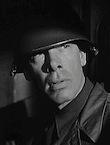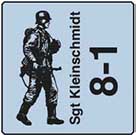Ridgeway
Posts: 139
Joined: 2/21/2011
Status: offline

|
quote:
ORIGINAL: heliodorus04
Well, I do know how to play the game, from both sides.
The way I feel about it now is that I spent the last 7 months figuring how the game engine worked, and learning how to optimize my efficiency whichever side I'm playing.
One could argue that I'm a better Soviet player than a German one, but I think the general consensus is that the German has much more pressure in 1941/42 than his Soviet counterpart. So I think it's fair to say I'm just a good player, for either side (not great - I'm only saying I'm proficient).
I spent all this time figuring out the mechanics - how to maximize air effectiveness, how to maximize German supply to the front-line units, what avenues are good advances for the German, what terrain is good for defense of the Soviet, etc.
And after figuring out how to optimize everything, I'm left with the conclusion, as I said before, that it's game mechanics that beat the German, not skilled Soviet play (I'm not going in to that because I think we've all talked a great deal about ZOCs, rail capacity, the simple way a combination of linebacker/linear gives the Soviet every ability to dictate the course of the German advance, etc.). All I'm asking is for forts to do what I think the realistically do - protect a limited approach area.
It boils down to how easy it is for a smart Soviet player to avoid being encircled. As I said to my Soviet opponent: The only thing the Soviet has to do is ensure he doesn't do anything after Turn 10 that gets 500,000 Soviets isolated, and he knows he can ride it out until late 1942 and take the initiative. There really is no issue with Soviet production: rail capacity is sufficient to protect at least as much industry as the Soviets did historically (and I don't consider this 'broken').
The only way to beat the Soviets is casualties, and the game mechanics make it really easy for the Soviet to avoid repeating his historic predecessor's casualty figures. That's it - that's the problem with the game.
Making forts less omni-directional (and I would add scaling - such that if a brigade creates a level 3 fort, a Corps can't derive the same benefit from it) would enable the German to move with better operational initiative. Right now, it's incredibly easy for the Soviet to steal that initiative.
The problem with this analysis is that the hexes themselves are artificial. A line of contiguous hexes would not represent a zig-zagging line. but rather a continuous front. Attacks from 2 or 3 adjacent hexsides should represent a basically "frontal" assault, and I don't think that there should be any reduction in fort benefits because of that. However, where a unit has genuinely flanked a position, so the attack is coming from opposite directions on the same hex, I would agree that there should be some sort of bonus/penalty. I suspect, though, that this is not the type of situation that concerns you.
I think you hit the nail on the head in another thread where you noted that the chances of an outright German "win" are slender against an experienced Soviet player, and that this is quite consistent with "real life." Let's face it, the Russians made some monumental mistakes that an experienced player will not make, and they still won the war quite handily. Their KIA/MIA numbers were over 3mm at the end of 1941, with an additional 1.5mm or so wounded. That is well beyond what most German players expect to achieve in 1941.
My point is that the Russian campaign is not a "fair" fight. The Russians will likely "win" no matter what. Hence the victory conditions, where the Germans can win, as long as they lose more slowly than they did historically. I am not sure why people have such a problem with this -- it is what it is.
The best analogy I can draw is to Battle of the Bulge games (which I enjoy to no end). In a properly constructed game, the Germans are never getting to Antwerp, and they will be lucky to sniff the Meuse. And that is exactly the point.
|
 Printable Version
Printable Version







 this is not one of them imo
this is not one of them imo











 This is the first thing to understand with PC games and every player should be aware of this to avoid asking impossible things. On the other hand: Once humans will be able to programm real learning and creative AI and have the hardware to execute the lightyear long routines in an acceptable timescale, oh wait...Sci-Fi.
This is the first thing to understand with PC games and every player should be aware of this to avoid asking impossible things. On the other hand: Once humans will be able to programm real learning and creative AI and have the hardware to execute the lightyear long routines in an acceptable timescale, oh wait...Sci-Fi.



 )
) 
 New Messages
New Messages No New Messages
No New Messages Hot Topic w/ New Messages
Hot Topic w/ New Messages Hot Topic w/o New Messages
Hot Topic w/o New Messages Locked w/ New Messages
Locked w/ New Messages Locked w/o New Messages
Locked w/o New Messages Post New Thread
Post New Thread